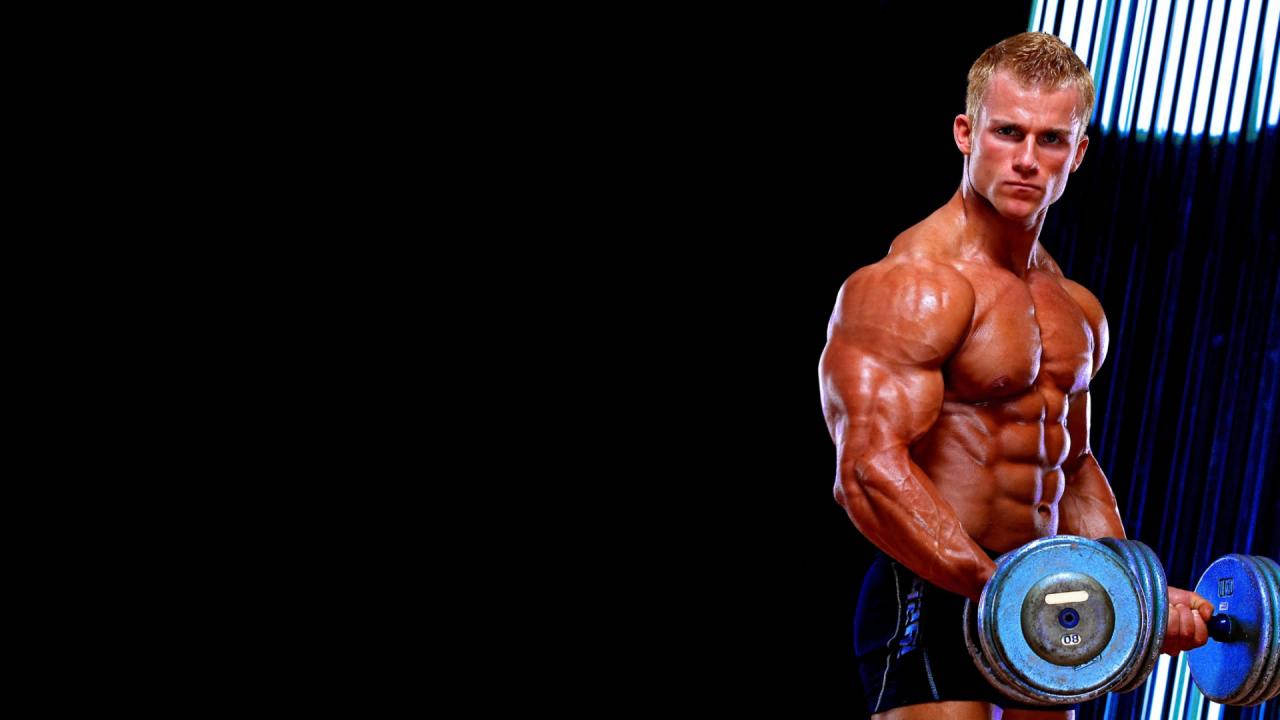
“There is no growth without pain!”
One of the most popular myths. They say that during training, muscles are damaged and from this they grow even more – like calluses on injured palms.
The pain the next day after training is really a consequence of the resulting micro-damage to the muscle fibers. But this is not a stimulus for muscle growth. On the contrary, it is what slows it down. Any damage requires healing, regeneration, “repair”. This is a long and complex process: you need to remove damaged elements from the fabric, neutralize them, deliver building material, launch the most complex restoration processes, spend a lot of effort and energy on all this. Muscle tissue itself, immune, circulatory, lymphatic and other systems of the body participate in this. These processes compete with muscle growth, taking away strength, building material and energy from them.
In addition, do not forget that the result of any damage and the inflammatory response to them is an increase in the amount of connective tissue, i.e. fibrosis. The muscle takes on the quality of the meat of an old cow: sinewy and rough. Do you need it?
“Big muscles – only from big weights”
Studies have shown that the same muscle development can be achieved with any weight, provided that low weight sets are to failure. A bit of physiology. The brain gives the signal to the muscle. First, such as to involve the amount of muscle fibers needed to overcome the weight. Then, during the approach, when some muscle cells get tired, the brain connects others that did not work before, were in reserve. And so more and more, until a refusal occurs.
When working with large weights (more than 85% of the maximum), the brain connects all muscle fibers to work at once. It turns out that with both large and small weights in this case, all muscle cells received a load. Just with small weights – in turn, with large – all at once.
In fairness, it is worth noting that small weights in practice can still lose to large ones, because there is no guarantee of bringing the muscle to an objective failure, when we can say with confidence that they have given a load to all muscle fibers. Simply due to the fact that such a multi-repetitive hike is too heavy, exhausting, the athlete will stop performing it early. But if you still bring it to a real refusal, there will be no difference between large and small weights.

“Everything that does not kill us makes us stronger”
Nietzsche’s beautiful expression in relation to training hints at the benefits of staggering, working to wear and tear, feeling exhausted, crawling out of the gym on all fours, lathered like a racehorse. And again, it’s not like that.
In biology, there is such a phenomenon – the dependence of the effect on the dose of exposure – when the best effect is achieved with the optimal amount of exposure. It’s not just about training, it’s about a lot. For example, about the effects of coffee, medicines, the feeling of eating. With a weak effect, we get an insufficient effect: coffee does not invigorate, there is no improvement from the medicine, food does not saturate. But even with an excessive dose, it is also bad: nausea from coffee, a side effect from an excessive dose of medication, unpleasant sensations of heaviness and overeating from excess food.
So it is with physical activity. If it is not enough, it is not enough for progress. But if there is too much, it is difficult for the body to recover, it spends a lot of energy on recovery, thereby slowing down progress. In short, the load should be of a certain value, optimal, precisely matched for maximum results. How to pick it up? This is taught by coaches.
“There is aerobics for health: jogging, swimming, cycling. Barbells and dumbbells – for pitching and weightlifters, they do not add health “
According to modern scientific research, resistance training has rightfully taken the first place, along with aerobic, precisely as an effective means of recovery. In no way inferior to cardio. The list of positive effects is huge:
- healthy joints, a strong muscle corset that protects joints and the spine from damage;
- improvement of insulin sensitivity, prevention of atherosclerosis, heart attack, stroke, diabetes, cancer;
- stable and effective regulatory systems: nervous, endocrine and immune. This is hardening, immunity, disease resistance.
So feel free to recommend strength training to everyone: young, old, thin, overweight. The main thing is the correct dosage and compliance with safety rules. Your coach will oversee this.
“Workout” N “is the most effective for weight loss”
In fact, the choice of training: the nature of the load, intensity, duration, frequency, combination – should be determined not by a person’s desire to lose weight, but, firstly, by the capabilities of his body and, secondly, by individual preferences. Someone will go to bodybuilding, someone like swimming or jogging. Someone will take a great interest in Pilates or dancing. For weight loss, all of this – no difference! All workouts consume calories, they are all fat burning in one way or another. There are no “fat-typing” trainings.
But choosing the one where the maximum amount of calories will be spent during or after training is wrong. A person, in pursuit of burned calories, will choose a load that does not correspond to his physical condition, at first he will really start to lose weight quickly, then everything will only get worse: overwork, lethargy, apathy, illness, reduced mobility, metabolic disorders. And so, instead of helping to lose weight, excessive load will provoke a set.

In fact, they only lose weight by organizing a calorie deficit. And this must be done, first of all, by changing the diet. Cubes on the belly are “made” not in the hall, but in the kitchen.
There are dozens, if not hundreds, of similar myths about training, nutrition, health improvement and weight loss. How can you protect yourself from their harmful effects? One defense – education!


